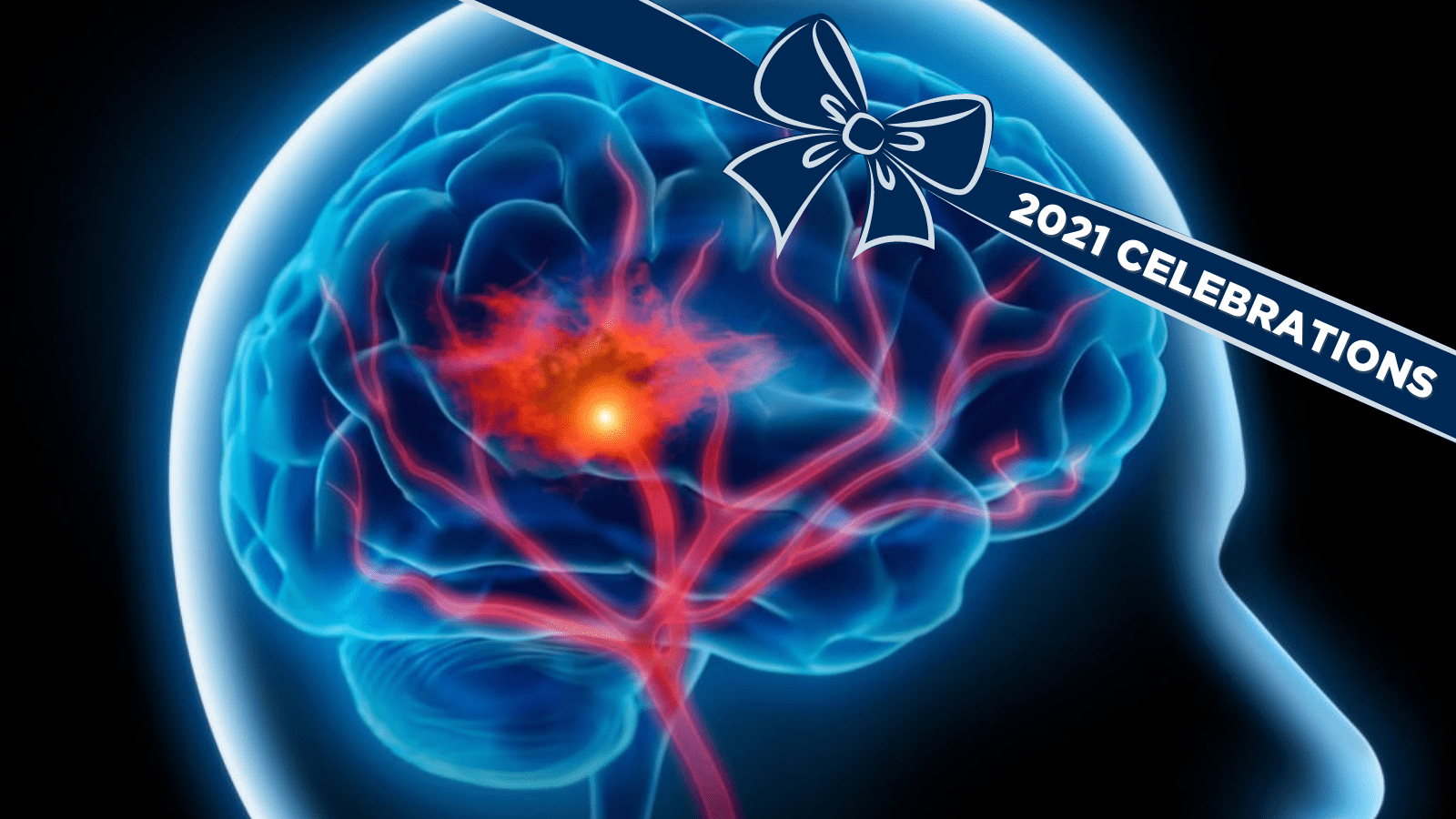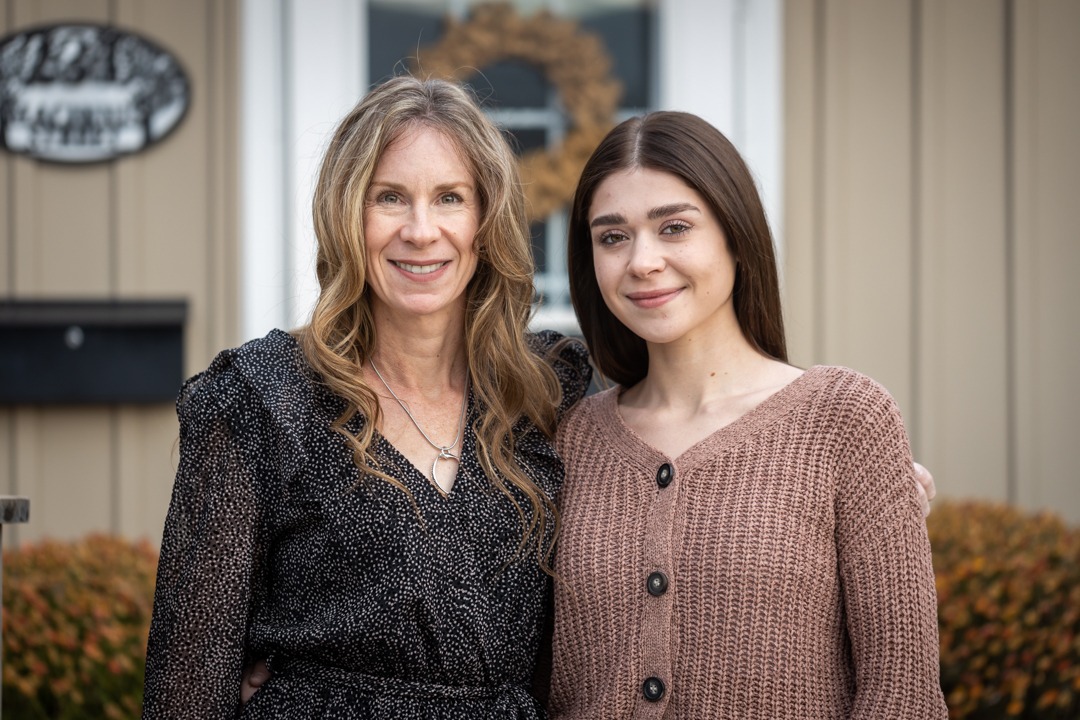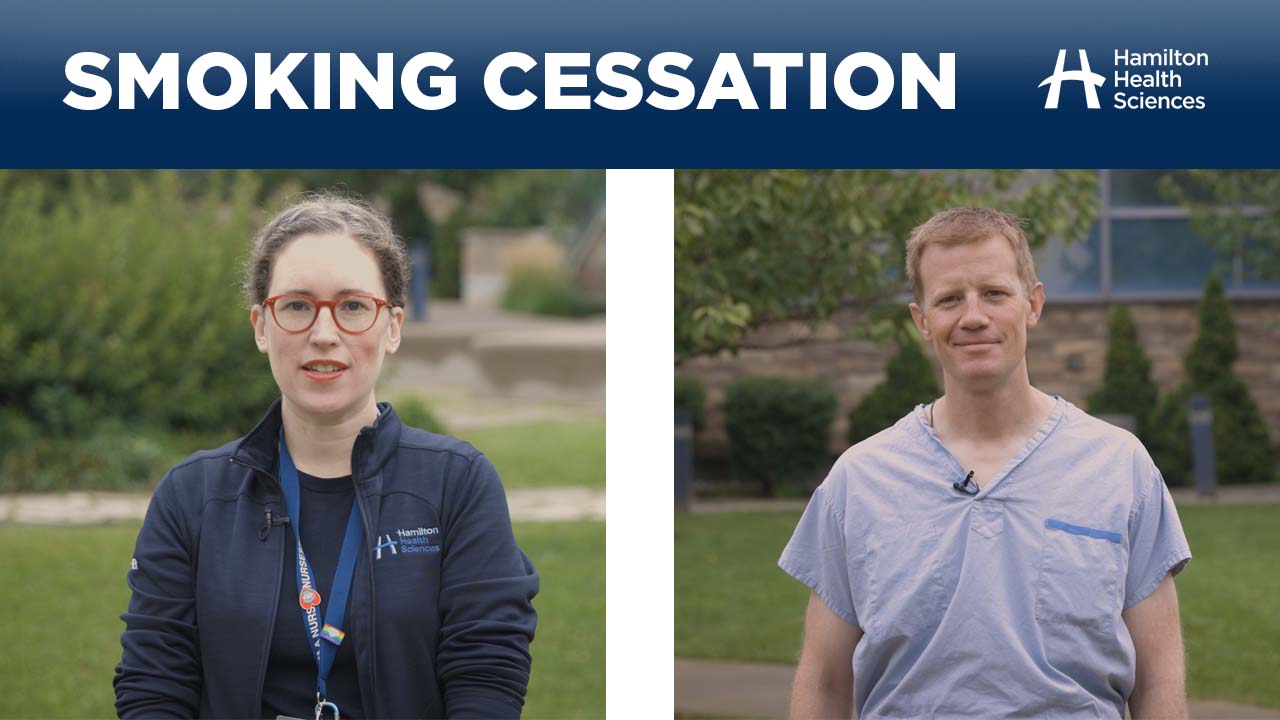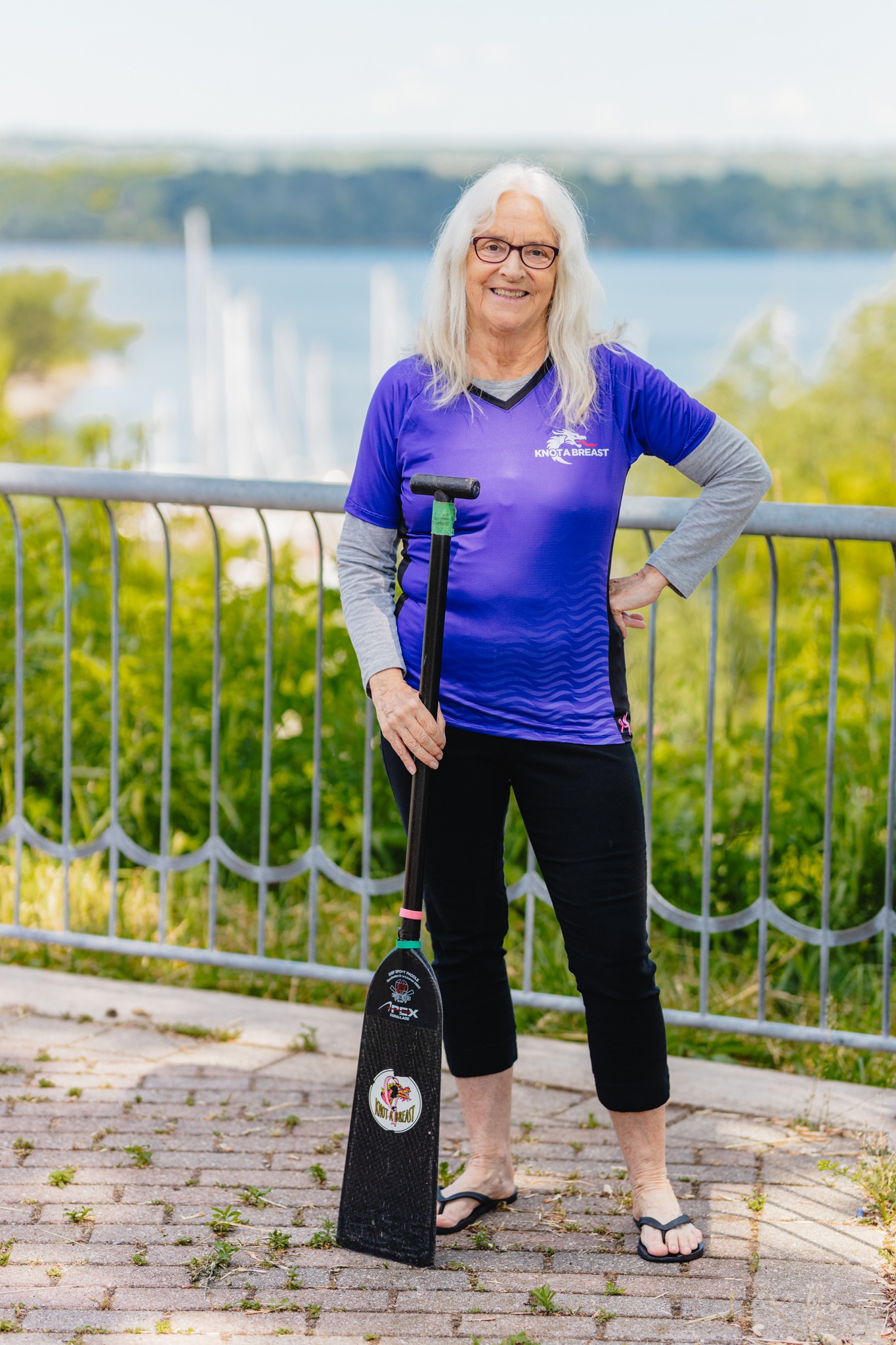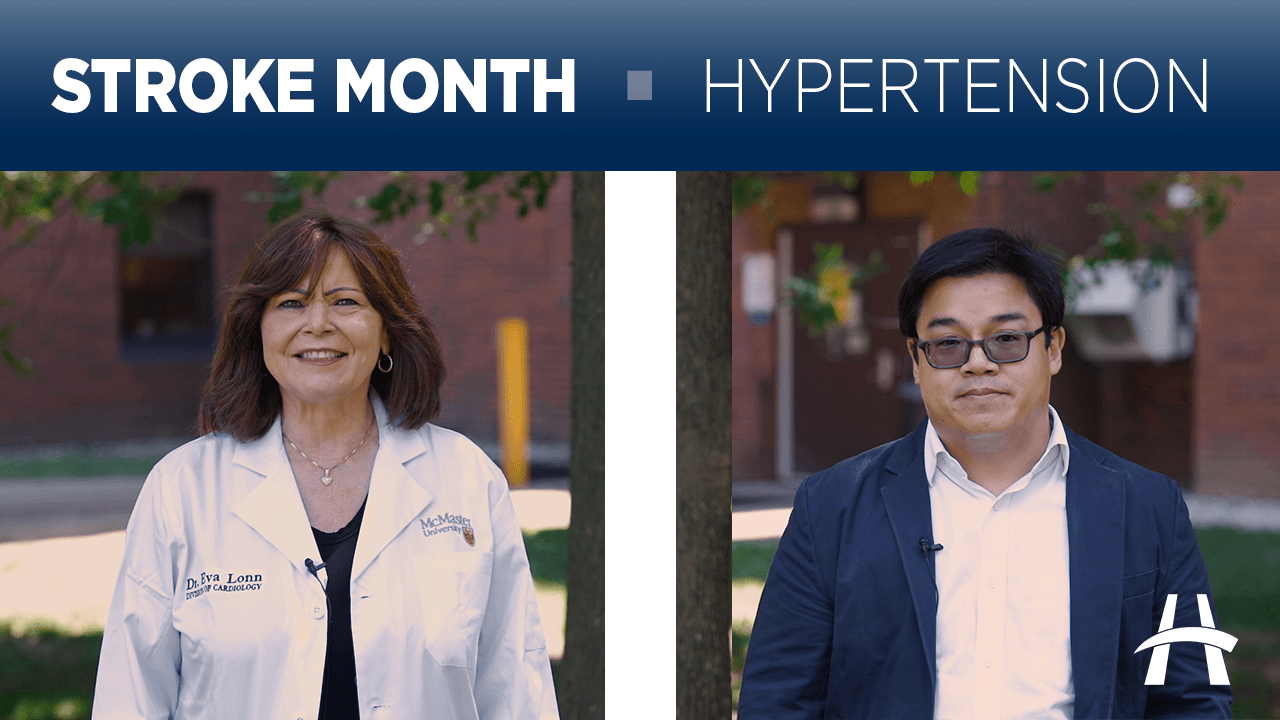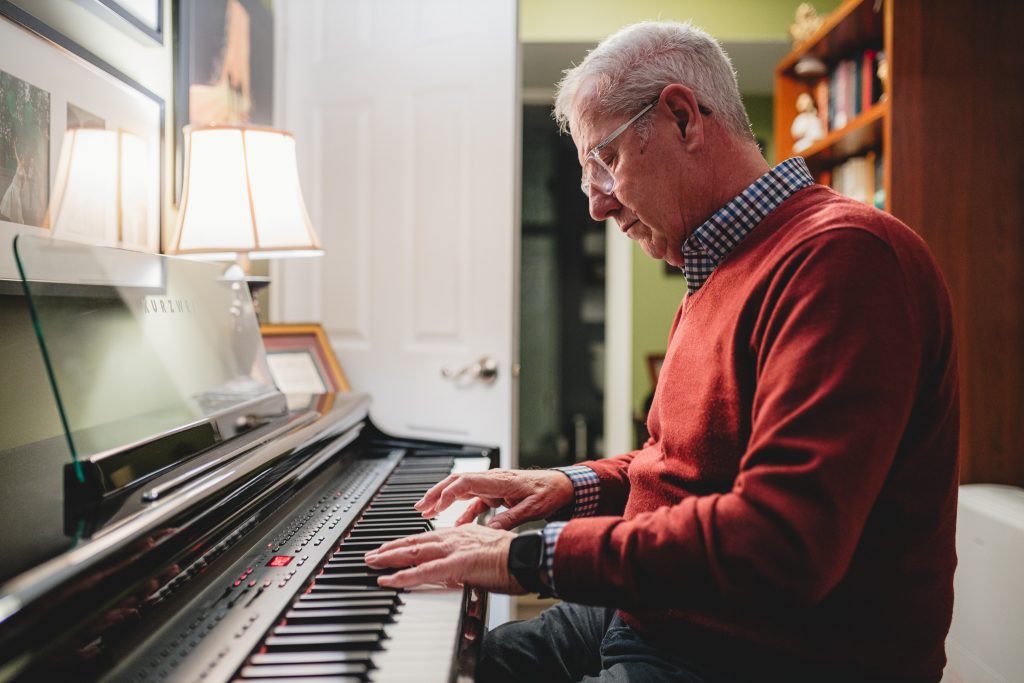
Creating a personalized map for people with stroke
David Dayler’s world was turned upside down when he suffered a stroke almost five years ago.
“Until then I had never been sick a day in my life,” says Dayler, 72, of Ancaster, who has almost fully recovered and is back to work as the director of faith formation at his church.
“In the days and weeks following my stroke, I felt like I had lost control over my life. I found myself in a health-care system that I knew very little about. It was unnerving and scary.”
During his recovery, Dayler participated in the outpatient stroke rehabilitation program at Hamilton Health Sciences (HHS). He also joined the Central South Regional Stroke Network’s Patient and Family Advisory Council based at HHS’ Hamilton General Hospital (HGH), where he is the volunteer co-chair. Hamilton Health Sciences is a provincial and national leader in stroke care, with HGH serving as the regional stroke centre for central-south Ontario.
The network’s advisory council includes people who have had a stroke and their loved ones. They share their experiences and provide feedback so that patient voices are an integral part of implementing best practices for the region.
Illustrating your journey to recovery
The advisory council’s recommendations included developing the `My Stroke Recovery Journey’ map to help people navigate the complex world of recovery. It’s currently being given to stroke patients at various hospital sites as part of an information package they take home when discharged. The plan is to make it available region-wide for people recovering from stroke.
“Multiple services and supports are available for people with stroke, depending on their needs.”
The map was inspired by similar resources developed elsewhere in the province. It offers a visual map of the stroke recovery journey, from diagnosis through to treatment, and transition from hospital to home and back into the community. It’s a living document, meaning that it can be personalized and continually updated as patient needs evolve and change.
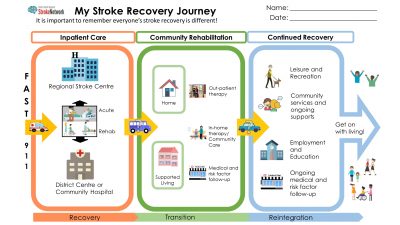
My Stroke Recovery Journey map — Page one of four pages
People who have had a stroke are encouraged to bring the map with them to their appointments so that it can be continually updated. Through a partnership with McMaster University researchers, it could be available electronically by spring.
The long and winding road
The road to recovery can be long and winding with many stops along the way including doctor’s appointments, physiotherapy sessions, speech language support, occupational therapy, home care and more.
“Multiple services and supports are available for people with stroke, depending on their needs,” says Eileen Britt, regional stroke rehabilitation and community coordinator for the regional stroke network. Britt co-chairs the advisory council with Dayler.
Stroke-patient friendly
Many people with stroke experience aphasia — a language disorder caused by damage to the part of the brain that controls speaking and comprehension. The new stroke map is aphasia-friendly using illustrations, a large font, generous amounts of blank space and easy-to-follow language.
“Information is delivered using basic language and images,” says Britt. “And because it was created with input from people with stroke and their loved ones, it’s built from the voices of those who have experienced and lived the journey.”
The map encourages conversations between stroke patients and their health care teams. It also supports goal setting because patients can see the possible next steps in their recovery, such as moving from acute rehabilitation in the hospital to living at home and attending an out-patient clinic for treatment.
Road map to recovery
The map separates the stroke experience into three stages and lists numerous health-care providers and support services that might be needed along the way.
- Recovery includes the person’s trip to the hospital emergency department where they are diagnosed, treated and cared for until they are well enough to be released.
- Transition includes their return home or to a supported living facility where they could receive a wide variety of ongoing or follow-up care including physiotherapy, meal services, speech language therapy or nursing support.
- Reintegration covers the next steps in rejoining the community. It can include taking part in recreational activities, support groups or returning to work or school.
“During the second stage and certainly by the third stage it’s about getting on with living,” says Britt. “There is life after stroke and it’s important to celebrate this. People who have experienced stroke can have a meaningful quality of life.”
Dayler didn’t experience aphasia but had to build back strength and movement on his right side. He says that the map would have been hugely helpful to him, if it had existed when he had his stroke.
“I think the information it provided would have taken away some of the anxiety I experienced around not knowing what the future held for me,” he says. “When you understand the recovery process, then you can plot a path forward for yourself, set goals, and meet them.”

